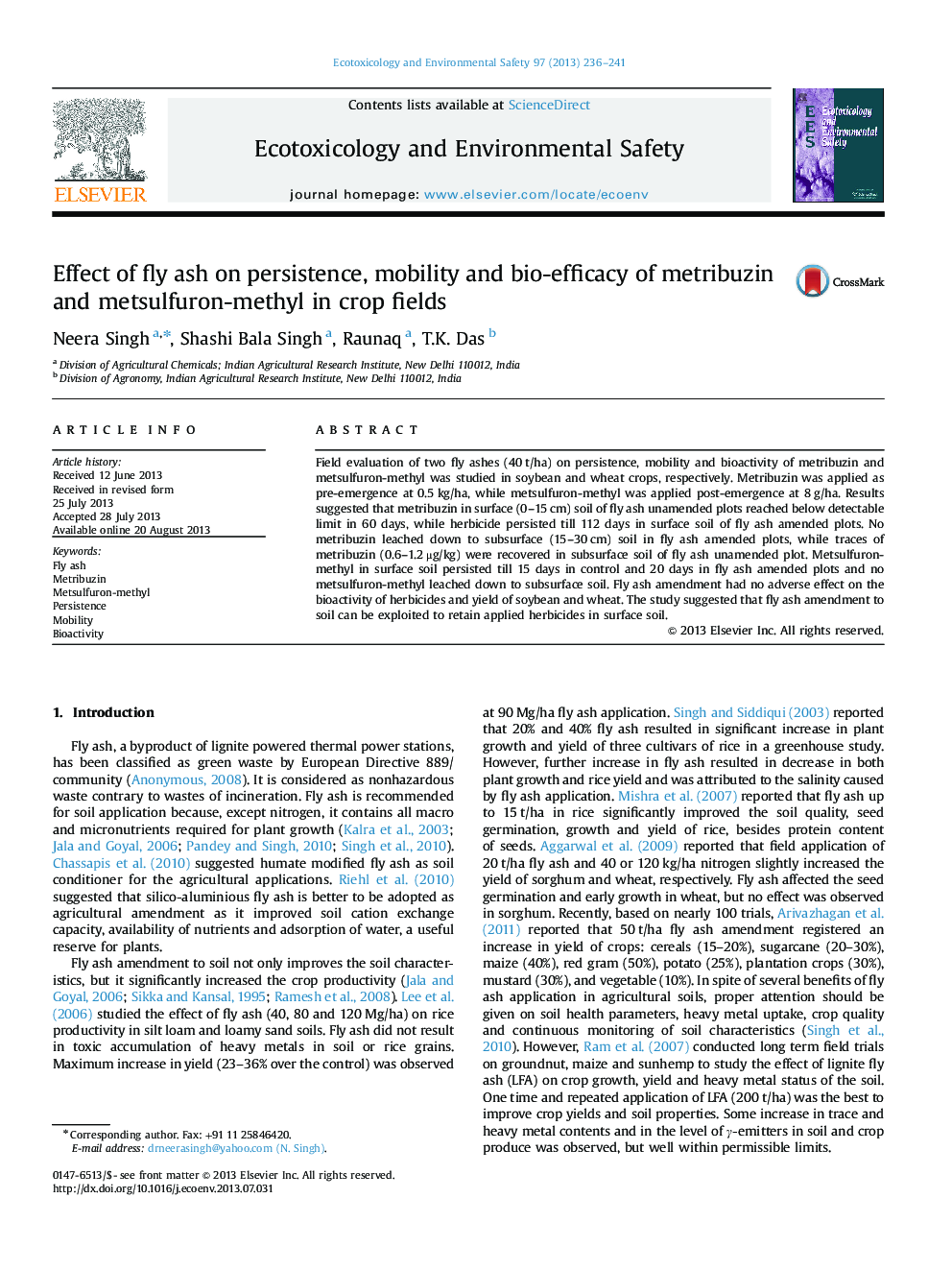| Article ID | Journal | Published Year | Pages | File Type |
|---|---|---|---|---|
| 4420324 | Ecotoxicology and Environmental Safety | 2013 | 6 Pages |
•Effect of two fly ash on metribuzin and metsulfuron-methyl fate and bioactivity was studied.•Both fly ash helped in reducing metribuzin/metabolites leaching to subsurface (15–20 cm) soil.•Fly ash application enhanced the persistence of both herbicides in soil.•No adverse effect of fly ash amendment on herbicide bioactivity was observed.
Field evaluation of two fly ashes (40 t/ha) on persistence, mobility and bioactivity of metribuzin and metsulfuron-methyl was studied in soybean and wheat crops, respectively. Metribuzin was applied as pre-emergence at 0.5 kg/ha, while metsulfuron-methyl was applied post-emergence at 8 g/ha. Results suggested that metribuzin in surface (0–15 cm) soil of fly ash unamended plots reached below detectable limit in 60 days, while herbicide persisted till 112 days in surface soil of fly ash amended plots. No metribuzin leached down to subsurface (15–30 cm) soil in fly ash amended plots, while traces of metribuzin (0.6–1.2 μg/kg) were recovered in subsurface soil of fly ash unamended plot. Metsulfuron-methyl in surface soil persisted till 15 days in control and 20 days in fly ash amended plots and no metsulfuron-methyl leached down to subsurface soil. Fly ash amendment had no adverse effect on the bioactivity of herbicides and yield of soybean and wheat. The study suggested that fly ash amendment to soil can be exploited to retain applied herbicides in surface soil.
